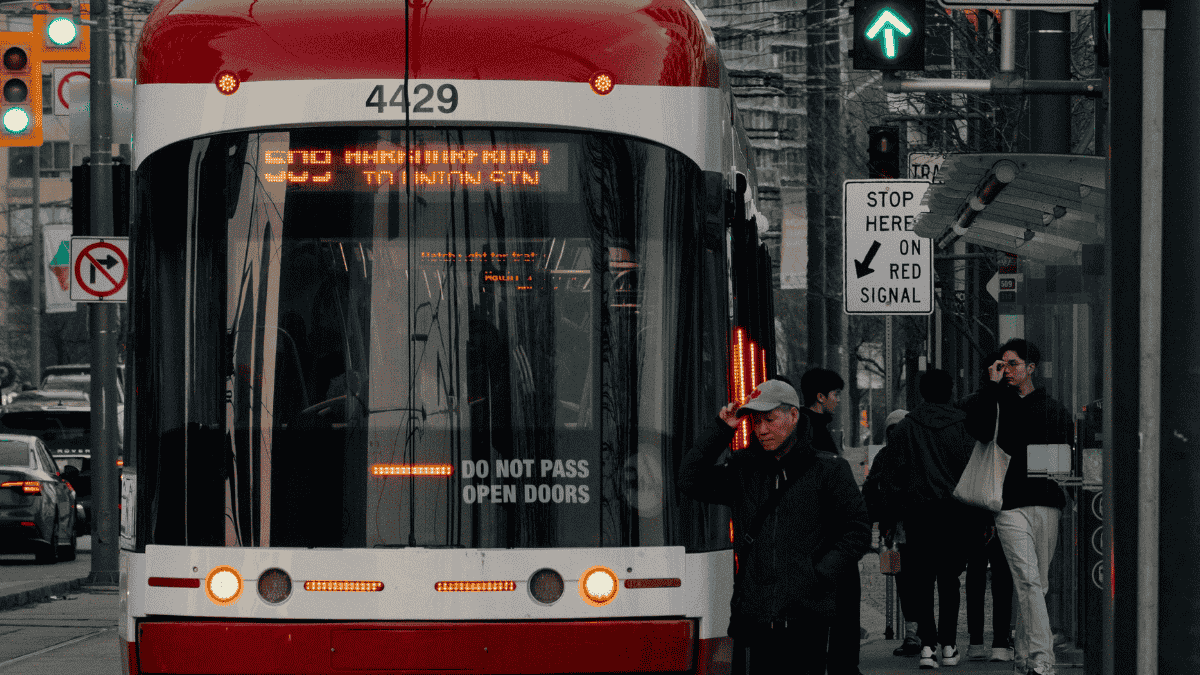
Cities are on the frontlines of climate change. Home to more than half of the world’s population, urban areas produce over 70% of global greenhouse gas emissions and are acutely vulnerable to rising seas, heat waves, flooding, and extreme weather events. At the same time, they are engines of economic growth, innovation, and social progress.
This paradox puts governments — local, regional, and national — at the center of an urgent question: how can cities grow while becoming more climate-resilient?
Future-proofing urban growth requires governments to integrate sustainability and resilience into every aspect of urban planning, infrastructure, and service delivery. It is not only about reducing emissions, but also about designing cities that can withstand, adapt to, and thrive in the face of climate challenges.
Why Climate-Resilient Cities Matter
Climate resilience is not a distant concern. It is a present necessity:
Heat Waves:
Cities are already experiencing higher average temperatures due to the urban heat island effect. Heat waves threaten public health, increase energy demand, and worsen air pollution.
Flooding and Storm Surges:
Coastal and riverine cities face rising risks of floods, with devastating impacts on housing, infrastructure, and livelihoods.
Drought and Water Scarcity:
Rapidly growing cities in arid regions are already struggling to provide water to residents and industries.
Infrastructure Strain:
Extreme weather damages transportation, energy grids, and communication networks, disrupting daily life and economic activity.
Social Inequity:
Vulnerable populations often live in flood-prone or poorly insulated housing, making them disproportionately exposed to climate risks.
Building climate-resilient cities is therefore not just an environmental imperative — it is an economic, social, and political one. Governments that fail to act risk higher costs, lower productivity, and eroded public trust.
The Role of Government in Building Resilience
Governments play a unique role in shaping urban resilience. Unlike private actors, they set the rules of the game, invest in public infrastructure, and safeguard collective well-being. Their responsibilities can be grouped into four main areas:
1. Planning and Regulation
Governments set zoning laws, building codes, and urban design standards. By integrating resilience criteria into these frameworks, they can prevent high-risk developments, mandate green infrastructure, and ensure new construction meets climate-ready standards.
2. Investment in Infrastructure
Public investment is critical for resilient infrastructure — flood defenses, sustainable transit, decentralized energy systems, and water management facilities. Governments must align infrastructure spending with long-term climate adaptation goals.
3. Policy and Incentives
Governments can create incentives for private developers and citizens to adopt resilient practices — through subsidies for green roofs, tax credits for renewable energy, or requirements for climate risk disclosure.
4. Coordination and Engagement
Resilience requires collaboration across departments, jurisdictions, and sectors. Governments serve as conveners, bringing together stakeholders from housing, transportation, energy, and community organizations to build integrated solutions.
Data-Driven Resilience: The Power of Evidence
Resilient cities rely on accurate, timely, and actionable data. Governments can harness data to:
- Map Climate Risks: Using satellite imagery, sensors, and predictive models to identify flood zones, heat hotspots, or vulnerable infrastructure.
- Forecast Impacts: Leveraging climate models to simulate future scenarios and test policy options.
- Monitor Progress: Tracking emissions reductions, green infrastructure coverage, and community resilience metrics.
- Enable Transparency: Sharing open data with citizens, businesses, and researchers to foster accountability and innovation.
For example, Copenhagen uses digital flood maps to inform zoning and investment decisions, while Singapore integrates predictive weather models into water management planning.
Green Infrastructure as a Cornerstone
Green infrastructure — natural systems integrated into urban environments — plays a crucial role in resilience. Governments can lead the way by prioritizing:
- Urban Forests and Green Roofs: Reducing heat islands, improving air quality, and absorbing stormwater.
- Wetlands and Coastal Buffers: Protecting cities from storm surges and flooding while supporting biodiversity.
- Permeable Pavements: Allowing rainwater to infiltrate and reducing runoff.
- Urban Agriculture: Increasing local food security and reducing transportation emissions.
Unlike traditional gray infrastructure, green infrastructure provides multiple co-benefits — environmental, social, and economic — making it a cost-effective resilience strategy.
Sustainable Mobility for Resilient Growth
Transportation is both a source of emissions and a resilience challenge. Extreme heat, storms, and floods disrupt mobility, with major economic consequences. Governments must invest in:
- Low-Carbon Transit: Expanding public transit networks powered by renewable energy.
- Active Mobility: Designing cities for walking and cycling, reducing car dependency.
- Climate-Ready Infrastructure: Elevating roads, protecting subway systems, and designing transport hubs with flood defenses.
- Digital Integration: Using AI and real-time data to optimize routes and manage congestion during disruptions.
Cities like Paris and Bogotá have shown how bold government action on mobility can both reduce emissions and improve resilience.
Energy and Water Resilience
Urban resilience hinges on secure and sustainable energy and water systems. Governments can strengthen these systems by:
- Decentralizing Energy: Promoting microgrids and renewable sources that reduce reliance on centralized infrastructure vulnerable to extreme weather.
- Improving Efficiency: Mandating energy-efficient buildings and appliances to reduce strain on grids during heat waves.
- Protecting Water Resources: Investing in desalination, wastewater recycling, and smart water networks to ensure supply during droughts.
- Embedding Circular Principles: Encouraging reuse and reducing waste in water and energy systems.
By aligning urban utilities with resilience goals, governments ensure cities can withstand shocks without sacrificing essential services.
Equity and Social Resilience
Resilience is not only about infrastructure; it is about people. Governments must ensure that resilience strategies address social inequities.
- Affordable, Climate-Safe Housing: Upgrading informal settlements and ensuring vulnerable communities are not pushed into high-risk areas.
- Health Systems Preparedness: Equipping hospitals and clinics to handle climate-related health risks such as heat stress and vector-borne diseases.
- Inclusive Participation: Engaging marginalized groups in decision-making, ensuring policies reflect diverse needs and perspectives.
- Workforce Development: Supporting green jobs and skills training to ensure inclusive economic growth during transitions.
A truly resilient city is one where all residents — not just the affluent — can thrive in the face of climate challenges.
Challenges to Building Climate-Resilient Cities
Governments face several barriers when it comes to building climate-resilient cities. Some of them include:
- Funding Gaps: Resilient infrastructure requires upfront investment, while budget cycles prioritize short-term returns.
- Political Will: Climate adaptation may not align with electoral timelines, making it difficult to sustain momentum.
- Data Limitations: Many cities lack robust climate data, hindering evidence-based planning.
- Institutional Silos: Departments often work in isolation, preventing integrated resilience strategies.
- Global Inequality: Developing countries face disproportionate risks but have fewer resources to invest in resilience.
Overcoming these challenges requires political leadership, innovative financing, and global collaboration.
Principles for Government Action
To future-proof urban growth, governments should adhere to key principles:
- Mainstream Resilience: Integrate climate resilience into every policy, plan, and investment.
- Adopt Data-Driven Governance: Leverage predictive analytics and open data for decision-making.
- Invest in Green Infrastructure: Prioritize nature-based solutions alongside gray infrastructure.
- Promote Equity: Ensure vulnerable communities are central to resilience strategies.
- Foster Collaboration: Work across sectors and borders to share best practices and resources.
- Plan for Long Horizons: Align resilience investments with 30–50 year timeframes, not just electoral cycles.
The Future of Climate-Resilient Cities
Looking ahead, cities will be both the greatest source of climate risk and the greatest opportunity for resilience innovation. Governments that act decisively today will unlock multiple benefits: reduced disaster costs, healthier communities, green jobs, and stronger economies.
Emerging trends include:
- Digital Twins for Urban Resilience: Simulating entire cities to test resilience policies virtually.
- AI-Enabled Forecasting: Predicting climate impacts and optimizing adaptive infrastructure in real time.
- Global Resilience Networks: Cities collaborating across borders through networks like C40 and 100 Resilient Cities.
- Sustainable Financing Mechanisms: Green bonds, resilience funds, and public-private partnerships scaling adaptation efforts.
The future city will not only be smart and connected, it will be climate-resilient by design.
Conclusion
Climate-resilient cities are no longer aspirational; they are essential. Governments at every level must lead in embedding resilience into planning, infrastructure, and policy. By doing so, they protect citizens, safeguard economies, and ensure urban growth is sustainable for generations to come.
The path forward is clear: align data, green infrastructure, sustainable mobility, and social equity to create urban environments that can withstand climate shocks while continuing to thrive. The role of government is not just to respond to crises, but to future-proof cities before crises strike.
In the face of climate change, resilience is not optional — it is the foundation of sustainable urban growth.






